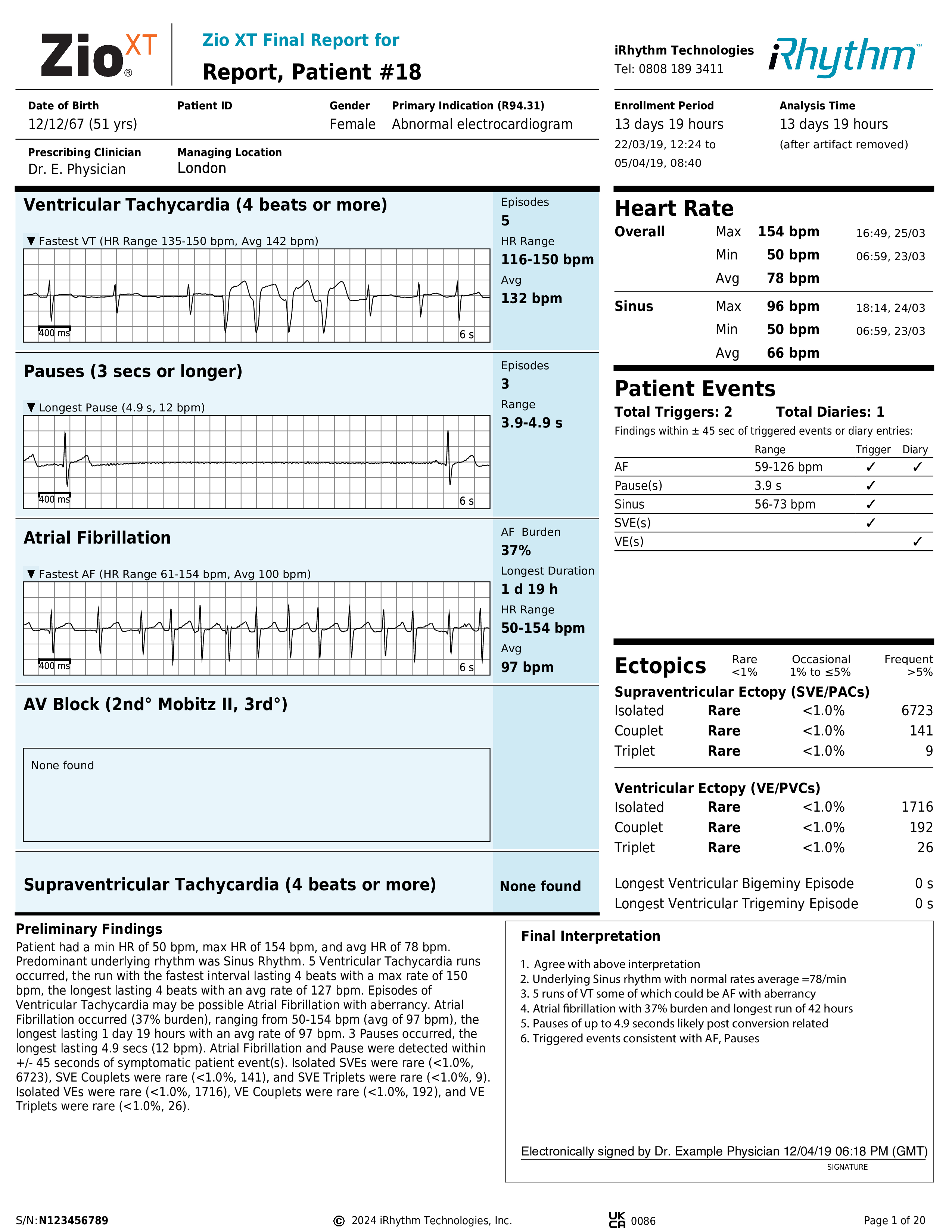See the report with 99% clinician agreement1
Zio patient report
Easy navigation, rich summary, and AI-generated interpretations give clinicians the confidence to make an accurate diagnosis.

Reporting
Recorded ECG data is processed for detection of arrhythmias using the UKCA marked, deep learned algorithm that can detect 13 different types of arrhythmias, plus sinus rhythm and artifact. The data is then curated and verified by Certified Cardiographic Physiologists to generate a Zio end-of-wear report.2-5
- The Zio® Report cover page provides a snapshot of actionable and clinically significant findings. The upper right hand corner of the report details the wear time and the total analyzable time with artifacts removed.
- Representative ECG strips are arranged in order of clinical significance with additional at-a-glance information such as duration, episodes, and burdens.
- Navigate with one click from the cover page to any of the report sections for more details. Download the report for full experience.
- Preliminary findings in the Zio report are intended for use by clinicians as an aid in arrhythmia diagnosis and management.
99% of physicians agree with the comprehensive end-of-wear report. Based on a review of all online Zio XT, Zio monitor, and Zio AT end-of-wear reports. Data on file. iRhythm Technologies, 2023.
- Data on file. iRhythm Technologies, 2020.
- Hannun et al. Cardiologist-level arrhythmia detection and classification in ambulatory electrocardiograms using a deep neural network. Nat Med. 2019;25:65-69. https://doi.org/10.1038/s41591-018-0268-3
- Deep learned algorithm is only available in the United States, European Union, Switzerland, United Kingdom, and Japan.
- FDA 510K clearance, CE mark, UKCA mark, and PMDA-approval.
WEB0059.02